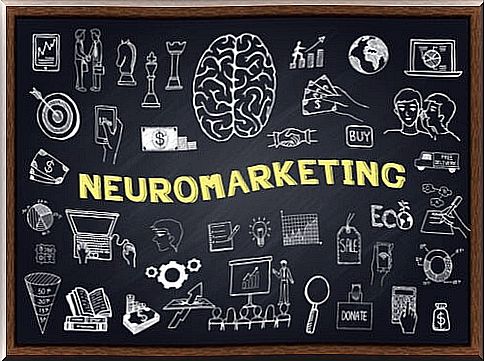Neuromarketing: The Consumer’s Brain

Every year large amounts of money are allocated to advertising campaigns. That is why it is necessary to innovate in the methods to understand how people react to ads. In this way neuromarketing was born, which offers cutting-edge methods to probe minds without requiring conscious or cognitive participation.
Thus, while neuropsychology studies the relationship between the human brain and psychological functions, neuromarketing promotes the value of looking at consumer behavior from a cerebral perspective.
Perhaps it is worth asking, how did neuromarketing arise? Well, the first investigation was carried out by professor of neuroscience Read Montague.

Pepsi or Coca-Cola?
Neuroscientist and professor Dr. Montague conducted a study on a group of people. In it, he requested that they drink Pepsi or Coca-Cola while having their brains scanned on an fMRI machine.
The study ended up revealing that different parts of the brain lit up whether or not people were aware of the brand they were consuming. The study thus suggested that a brand like Coca-Cola has the power to “own” a piece of our frontal cortex.
The frontal lobe is considered responsible for our executive function, which manages our attention, controls our short-term memory and is responsible for planning.
In conclusion, it seems that according to the study, when people know that they are drinking Coca-Cola, they say that they prefer this brand over Pepsi and their executive functions are activated. However, when they don’t know what brand they are consuming, they prefer the Pepsi brand.
What happens here is not the activation of executive functions. Rather, an older structure nested in the limbic system is activated. This area of the brain is responsible for our emotional and instinctive behavior.
Thus, this study was a pioneer in highlighting the importance of the power of neuromarketing and the brain when making decisions.
Neuromarketing: understanding the consumer’s mind
For decades, the goal of market research has been to predict and explain the effectiveness of advertising campaigns. However, for the most part, conventional techniques have failed.
Thus, neuroimaging techniques have offered interesting methodological alternatives. These allow marketers to understand consumers’ brains and gain valuable insight into the subconscious processes that explain why a message ultimately succeeds or fails.
Neuromarketing allows you to eliminate the biggest problem in conventional advertising research. This is trusting that people have the will and ability to report how they are affected by a specific ad.
Neuromarketing and its techniques
There appear to be many ways to measure physiological responses to advertising. However, there are only three well-established non-invasive methods. These are:
- Electroencephalography (EEG)
- Magnetoencephalography (MEG)
- Functional Magnetic Resonance (fMRI)
Electroencephalography
In the presence of a particular stimulus like an advertisement, our neurons fire and produce a small electrical current that can be amplified. These electrical currents have multiple frequency patterns called brain waves that are associated with different states of activation.
When using EEG for a market research experiment, the electrodes are placed on the scalp of the investigated subject. Thus, brain waves can be recorded in very short time intervals.
Magnetoencephalography
Neural activity creates a magnetic field that can be amplified and mapped by MEG. Magnetoencephalography has excellent temporal resolution, and more importantly, better spatial resolution than EEG.
However, although it continues to evolve as a technique, magnetoencephalography alone is not ideal for marketing studies. Market researchers use this technique in conjunction with fMRI, to optimize both temporal and spatial resolution.
Functional magnetic resonance imaging (fMRI)
Unlike the previous ones, this technique is based on the use of a magnetic resonance imaging (MRI) scanner to visualize the change in blood flow in the brain.
When neurons fire, they need to use energy that is carried by the bloodstream and rapidly metabolized.
Thus, this technique has the advantage of being able to visualize deep brain structures, especially those involved in emotional responses, which are of particular interest to market researchers. That is why and other factors that this technique is considered the best when it comes to studying neuromarketing.

Thus, although neuromarketing is relatively young, it seems that it has come to stay. With this, it is worth asking, is it ethical to study the brain for these purposes?
Fortunately, and for the moment, many of the advertisements coming from neuromarketing aim to change people’s self-destructive behaviors and not to make them consume unnecessary products.









